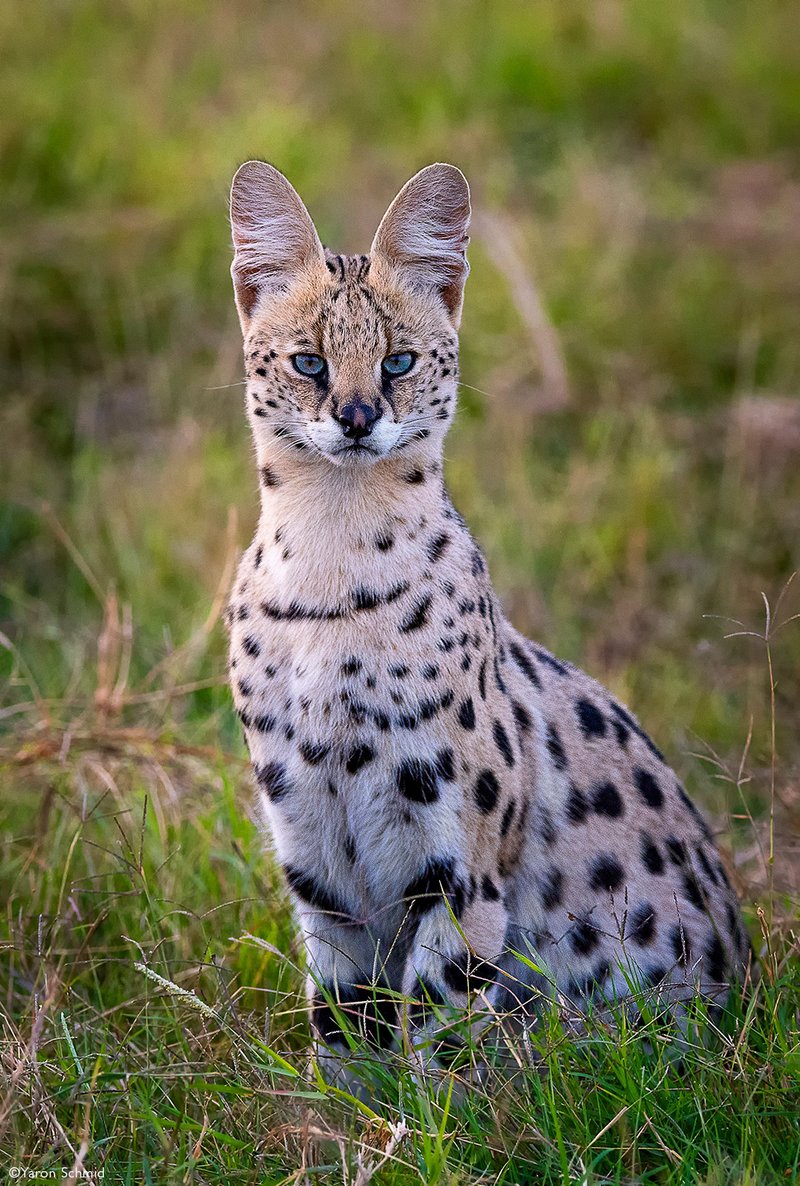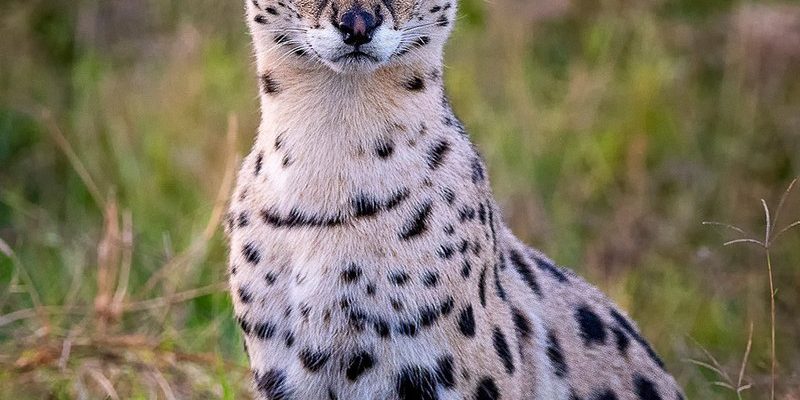
To get a clearer picture, it’s important to understand what makes the serval tick. Imagine a cat that can jump over your head with ease or track down prey with pinpoint accuracy. Servals are incredible hunters, primarily catching rodents and birds. However, their natural beauty and unique traits have come at a cost, as their populations are swiftly declining due to habitat loss and hunting. We’ll unpack these challenges and the efforts underway to protect them.
What is a Serval?
The serval (Leptailurus serval) is a medium-sized wild cat primarily found in sub-Saharan Africa. Its distinctive features include a lean body, long legs, and large ears, which help it hear the faintest sounds of prey scuttling through the grass. Think of it as nature’s built-in radar!
These cats can reach heights of about 24 to 36 inches at the shoulder and weigh anywhere from 20 to 40 pounds. Their golden-yellow fur is covered in black spots and stripes, serving as natural camouflage in their grassland habitats. It’s like wearing the perfect outfit to blend in at a party.
Beyond their looks, servals are superb hunters. They can leap up to 10 feet high to catch birds in mid-air. Their keen eyesight and excellent hearing make them formidable predators. You might think of them as the acrobats of the cat world, showcasing remarkable agility as they stalk and pounce on unsuspecting prey.
Threats to the Serval
Unfortunately, servals are navigating a tricky path due to several serious threats. One major issue is habitat loss. As human populations grow, forests and grasslands are cleared for agriculture and urban development. Picture a beautiful landscape being replaced by concrete jungles—this is the reality for many servals.
Another significant threat comes from poaching and illegal hunting. Servals are sometimes trapped or hunted for their stunning fur, which can be sold on the black market. This isn’t just a problem for servals; it highlights broader issues of wildlife trafficking that affect many animals around the globe.
Additionally, there’s climate change. As the planet warms, the delicate ecosystems that servals rely on may shift or disappear. Changes in rainfall patterns can affect their food sources, making survival even tougher. It’s a little like trying to find dinner when the restaurant you love suddenly goes out of business—frustrating and stressful!
The Conservation Status of Servals
So, you might be wondering, “Are servals officially endangered?” According to the IUCN Red List, the serval is classified as Least Concern, but that doesn’t mean they’re out of the woods. Their population trends are notably decreasing in some areas, especially in regions heavily impacted by habitat destruction and hunting.
What does this classification mean? Essentially, while servals aren’t on the brink of extinction, they face significant challenges that could change their status if we don’t act. Keeping a close eye on their populations is vital for ensuring that their numbers don’t continue to dwindle.
In South Africa, for instance, serval populations are relatively stable, but in other countries, it’s a different story. Regional differences highlight the need for tailored conservation efforts that address specific threats in each area.
Conservation Efforts for Servals
Many organizations and individuals are stepping up to protect servals and their habitats. One key approach is habitat restoration. This involves replanting native vegetation and creating protected areas where servals can thrive without the looming threat of human encroachment. Think about it as helping your friend create a cozy home where they can feel safe and secure.
Additionally, laws and regulations are being strengthened to combat poaching. Enforcement of wildlife protection laws can act as a deterrent to illegal hunters. Education is also crucial—teaching communities about the importance of servals and their roles in the ecosystem can foster positive attitudes toward these cats and encourage local conservation efforts.
Some conservation programs focus on research and monitoring. By tracking serval populations and their movements, experts can gather vital data that inform conservation strategies. It’s a bit like collecting clues in a mystery—every little bit helps solve the puzzle of how to keep servals safe.
Community Involvement in Serval Conservation
Community engagement plays a critical role in the conservation landscape. After all, local people are often the first line of defense for wildlife. Encouraging communities to adopt sustainable practices helps reduce the pressure on serval populations.
Programs that promote eco-tourism can also provide alternative income sources. If locals see a financial benefit from having servals in their area—like tourists coming to observe these beautiful animals—they may be more motivated to protect them. It’s a win-win situation: servals get a fighting chance, and communities can thrive.
Moreover, forming partnerships between conservation organizations and local communities can empower residents. When people feel invested in their environment, they’re more likely to take action to protect it. This grassroots approach can be incredibly effective in changing attitudes and behaviors.
What You Can Do to Help Servals
You might be thinking, “That’s great, but what can I do to help servals from miles away?” Every little step counts, and here are some ideas:
- Educate Yourself and Others: Learn about servals and share information with friends and family. Awareness is the first step toward making a difference.
- Support Conservation Organizations: Consider donating to or volunteering with groups dedicated to wildlife conservation. Your contribution can profoundly impact ongoing efforts.
- Practice Responsible Consumption: Be mindful of products you buy. Avoid items made from endangered species or those that contribute to habitat destruction. Simple choices can lead to significant changes.
- Spread the Word: Use social media to share stories and information about servals. The more people know about them, the better chance they have.
In conclusion, while servals are not currently classified as endangered, they face many challenges that could threaten their existence. With habitat loss, poaching, and climate change at play, it’s crucial to stay informed and engaged in conservation efforts. The commitment of individuals, communities, and organizations can help ensure that these elegant cats continue to leap through the African grasslands for generations to come.
By taking small steps and supporting ongoing efforts, you can be part of the bigger picture that secures a bright future for the serval. After all, every action—no matter how small—adds up to make a significant impact.

